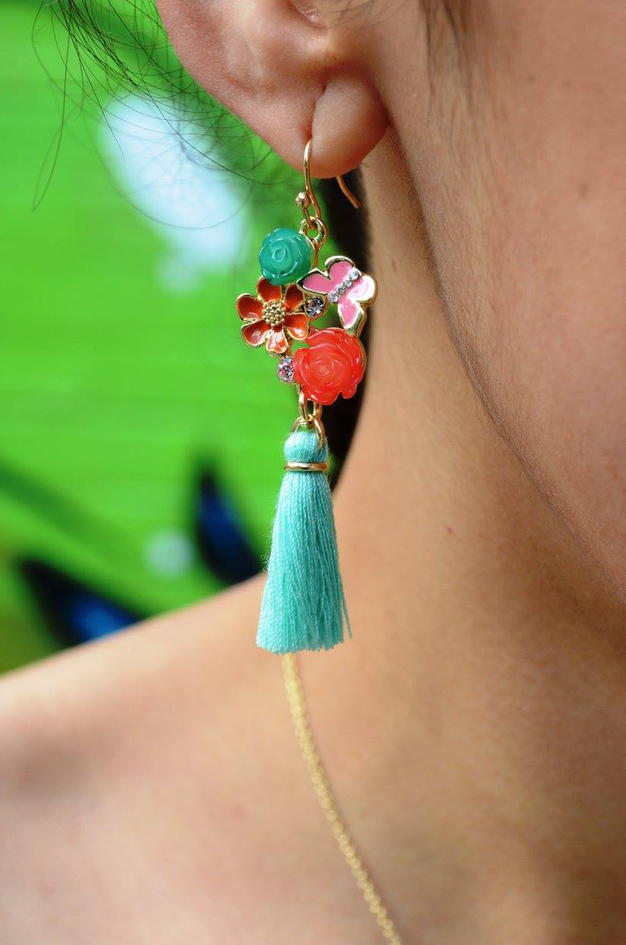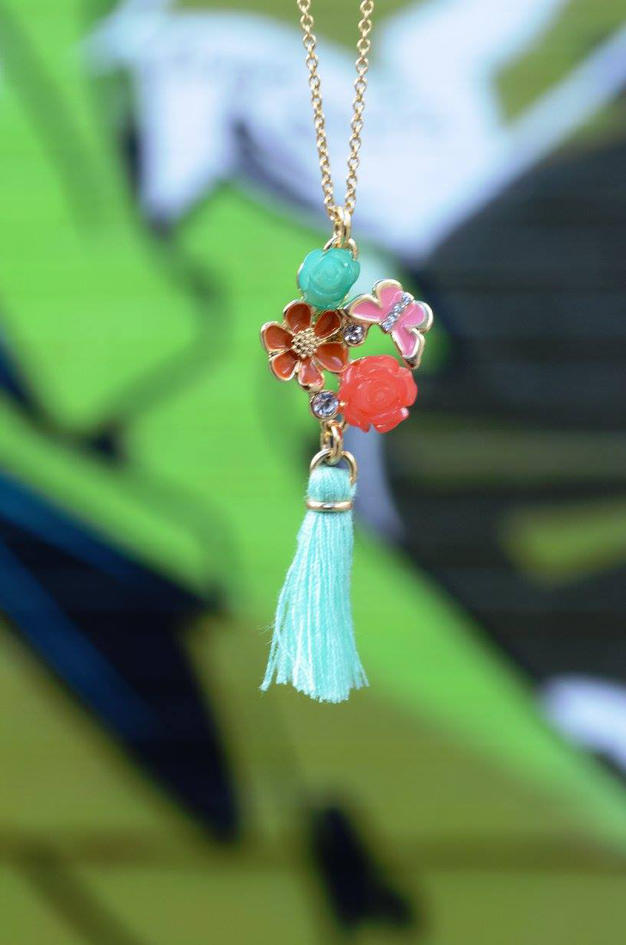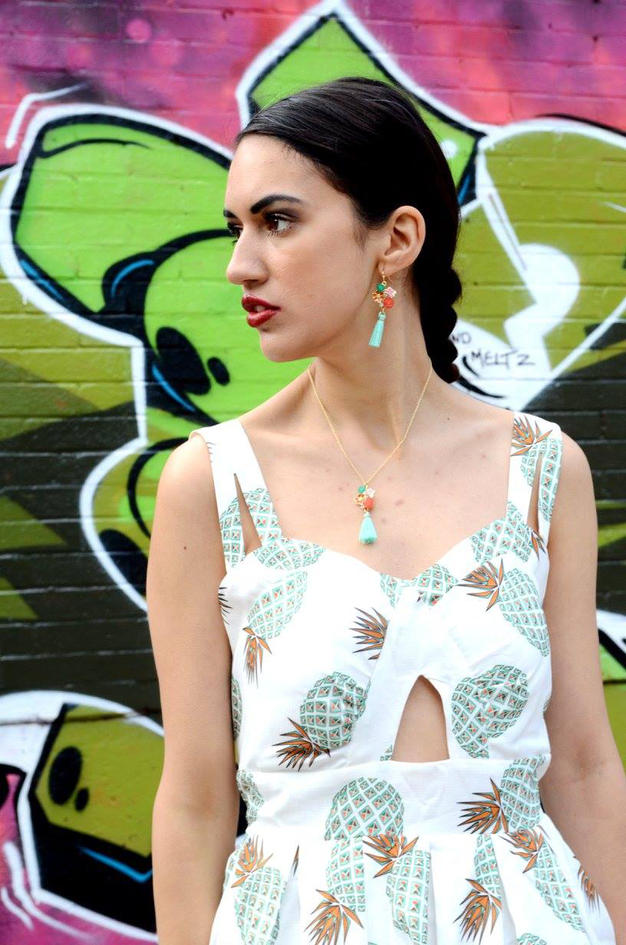History has always been a contentious subject to write about, particularly when in many cases history books are always rewritten by the ‘winners’. Accuracy in the eyes of historians is ‘integral’ to maintain authenticity yet in at least 80% of cases the facts have all been twisted by the scribes of our ancestors. That being said there are a few historical artifacts that we know and accept including religious iconography, building constructions and of course jewellery. When jewellery was created during the birth of mankind there was no pomp or ceremony but a need to distinguish ourselves from our fellow Neanderthals. Over time the jewellery become grander and precious metals were delegated to the rich while the poor had to make do with rosary beads as a symbolism of their ‘piety’ in a predominantly Christian world. There was the medieval focus on rubies and silver, the Renaissances love for decorative but functional girdles, whose claim that it defected evil during childbirth was well spread and the stylized Art Nouveau era which saw the female body heavily featured on ‘Cameo’ pieces. Throughout history jewellery was often a signifier of class, status and wealth but ironically in a modern era which is heavily run by capitalist principles, jewellery has become accessible to people of all backgrounds. In particular, the late Twentieth Century saw designer George Jensen widen the concept of wearable art, allowing the advent of new materials like plastic to make jewellery a cheap and lucrative market. The jewellery as art movement was popular during the 90’s with ‘bling bling’ becoming popularized by the New York Hip Hop movement but gradually spread into other sub-cultures, with oriental, artisan and masonic art movements becoming a feature which many jewellery brands including Majique picked up on. Home to some of History’s finest art movements, Majique offers a glimpse into an unseen world with modern rose gold lounging next to Art Deco pendants, while a single bird perched on a tropical themed fringed earring is very much borrowed from Art Nouveau lore. Mixing a hybrid of jewellery eras is never an easy feat to master but if anyone can do it, it is Majique. And so, we begin our history lesson in the precious cusp of time between the late Twentieth Century Contemporary Art Movement and the 19th-20th century Art Nouveau movement, which paralleled each other stylistically throughout the entirety of the century. Art Nouveau was a short-lived, underrepresented ‘wearable’ art movement that was popular in the mid 1890’s before fizzling out in the 1910’s, whose ‘neat, illustrative’ detailing was no match for the graphic impact of the Art Deco movement. Art Nouveau represented a new age of thinking, aimed at modernizing design and sought to relinquish the shackles previously inhibited by religious iconography jewellery collections so popular in centuries past. The focus of Art Nouveau was to eradicate ‘bulkiness’ ‘ornate greed’ and ‘frivolous decorative appeal’, creating pieces that were not ‘poor imitations’ of earlier period pieces but instead made from free-flowing, organic lines, with an emphasis on nature and colour rather than religious as its contextual influences. Despite the widespread prominence of its successor the Art Deco movement, Nouveau set the cogs in motion in creating ‘modern jewellery’ as we know it today. Majique’s interpretation of Art Nouveau principles is very much clear cut throughout this post, with no emphasis on the female body as a motif but nevertheless flowers and birds remain prominent influences throughout Majique’s collection.
Home to some of History’s finest art movements, Majique offers a glimpse into an unseen world with modern rose gold lounging next to Art Deco pendants, while a single bird perched on a tropical themed fringed earring is very much borrowed from Art Nouveau lore. Mixing a hybrid of jewellery eras is never an easy feat to master but if anyone can do it, it is Majique. And so, we begin our history lesson in the precious cusp of time between the late Twentieth Century Contemporary Art Movement and the 19th-20th century Art Nouveau movement, which paralleled each other stylistically throughout the entirety of the century. Art Nouveau was a short-lived, underrepresented ‘wearable’ art movement that was popular in the mid 1890’s before fizzling out in the 1910’s, whose ‘neat, illustrative’ detailing was no match for the graphic impact of the Art Deco movement. Art Nouveau represented a new age of thinking, aimed at modernizing design and sought to relinquish the shackles previously inhibited by religious iconography jewellery collections so popular in centuries past. The focus of Art Nouveau was to eradicate ‘bulkiness’ ‘ornate greed’ and ‘frivolous decorative appeal’, creating pieces that were not ‘poor imitations’ of earlier period pieces but instead made from free-flowing, organic lines, with an emphasis on nature and colour rather than religious as its contextual influences. Despite the widespread prominence of its successor the Art Deco movement, Nouveau set the cogs in motion in creating ‘modern jewellery’ as we know it today. Majique’s interpretation of Art Nouveau principles is very much clear cut throughout this post, with no emphasis on the female body as a motif but nevertheless flowers and birds remain prominent influences throughout Majique’s collection.  The Art Nouveau period was nevertheless a wearable art era that used ‘nature with restraint’, thus when it died and then re-emerged in the 1960’s it become a precursor to modern jewellery art movements, credited for late Twentieth Century’s use of geometric, nature based, non-hierarchial art genres. In particular the 90’s used the delicate, minimalist principles of the late 1800’s-early 1900’s and developed it into an entirely new art movement: Minimalism. Free, flowing lines, nature as a motif and delicate geometric design was all woven into minimalist jewellery but unlike Art Nouveau there was little emphasis on colour, with metals and alloy metals being a more popular preference. Thus Majique took a liberal approach to blending Art Nouveau and Minimalist/ Late Twentieth century wearable art movements by creating the two designs below which blend European design with Oriental techniques such as Mokume-gane. While Majique does not use mokume gane, the focus on an oriental vs european blend is nevertheless a predominant focus in their curation of jewellery sub-genres. Notice the matching fish hook earrings and lobster clasp necklace both finished in gold tone, whose use of ‘bright colours’ combined with a focus on ‘nature with restraint’ stylistically resembles a modern successor to Art Nouveau meets Minimalism art curation. While the late Nineteenth Century and Twentieth Century were precursors to modern jewellery curation, gold, silver and bronze were the original metals of choice and next week we will discuss how Majique pre-mediates or echoes the sensibilities surrounding ‘gold culture’ and transforms it into a metal that anyone and not just royalists or nobles can afford.
The Art Nouveau period was nevertheless a wearable art era that used ‘nature with restraint’, thus when it died and then re-emerged in the 1960’s it become a precursor to modern jewellery art movements, credited for late Twentieth Century’s use of geometric, nature based, non-hierarchial art genres. In particular the 90’s used the delicate, minimalist principles of the late 1800’s-early 1900’s and developed it into an entirely new art movement: Minimalism. Free, flowing lines, nature as a motif and delicate geometric design was all woven into minimalist jewellery but unlike Art Nouveau there was little emphasis on colour, with metals and alloy metals being a more popular preference. Thus Majique took a liberal approach to blending Art Nouveau and Minimalist/ Late Twentieth century wearable art movements by creating the two designs below which blend European design with Oriental techniques such as Mokume-gane. While Majique does not use mokume gane, the focus on an oriental vs european blend is nevertheless a predominant focus in their curation of jewellery sub-genres. Notice the matching fish hook earrings and lobster clasp necklace both finished in gold tone, whose use of ‘bright colours’ combined with a focus on ‘nature with restraint’ stylistically resembles a modern successor to Art Nouveau meets Minimalism art curation. While the late Nineteenth Century and Twentieth Century were precursors to modern jewellery curation, gold, silver and bronze were the original metals of choice and next week we will discuss how Majique pre-mediates or echoes the sensibilities surrounding ‘gold culture’ and transforms it into a metal that anyone and not just royalists or nobles can afford.  What Are Your Thoughts on the Art Nouveau and Minimalist Wearable Art Period?
What Are Your Thoughts on the Art Nouveau and Minimalist Wearable Art Period?
Leave a Reply